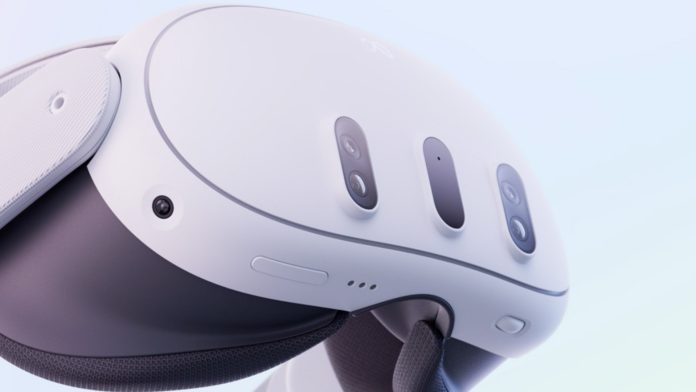When it was debuted three years ago, the Meta Quest 2 was considered a game changer in the realm of virtual reality. Its low price of $300 makes VR accessible to a wide range of people. The Meta Quest 3, on the other hand, takes things to a whole new level.
Despite its improvements, Quest 3 helps one appreciate what Quest 2 achieved. The redesigned pancake lenses on the Quest 3 make it slimmer and lighter. The new screens outperform the PlayStation VR 2 with a resolution of 2,064 by 2,208 pixels per eye.
Another notable enhancement is the Quest 3’s adoption of Qualcomm’s latest Snapdragon XR2 Gen 2 CPU, which has double the GPU capability of its predecessor. The combination of full-color mixed reality cameras and a depth sensor creates an immersive experience while mapping the environment. Customers may select between a 128GB model for $500 and a 512GB model for $650 in terms of storage.
Although the Quest 3 lacks several features, such as face or eye tracking and controller cameras, it makes up for it with its mixed reality capabilities. Users may switch between virtual reality and the real world by double-tapping on the headset’s side. The Quest 3 even supports basic multitasking by allowing you to organize up to three windowed Quest programs on a virtual tray that can be moved about the actual space.
Furthermore, the finger tracking on the Quest 3 has considerably improved over its predecessor, making app navigation more straightforward. The higher resolution display improves game visual quality, while the extra RAM allows for quicker loading times and more controller accuracy.
While the Quest 3’s mixed reality capability isn’t flawless, it does provide a look into the promise of spatial computing at a considerably lower cost than competitors such as Apple’s Vision Pro. The Meta Quest 3 is unquestionably a strong option for both VR veterans and beginners, thanks to its excellent advancements and user-friendly features.
Definitions:
- Virtual Reality (VR): A simulated experience that can be similar to or completely different from the real world.
- Mixed Reality: A combination of virtual reality and the real world, allowing users to interact with virtual objects while still perceiving the physical environment.
- GPU: Graphics Processing Unit, a specialized circuit that accelerates the creation of images, animations, and videos.
- RAM: Random Access Memory, a form of computer memory that allows data to be read or written in almost the same amount of time regardless of the physical location of data inside the memory.
Sources: The Verge, Engadget


